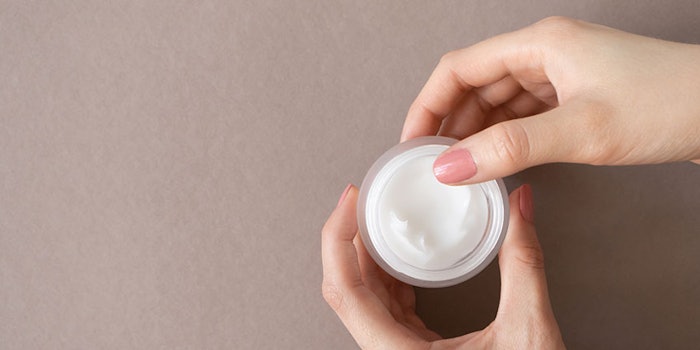
Read this article in its entirety in the September 2020 digital edition. . .
Consumer concern has continued to grow with panic buying and precautionary safety measures due to COVID-19. With these factors, it is predicted the demand for hand soap—and hand care, for that matter—will continue to escalate. According to market research firm Fact.MR,1 the global hand soap market is forecasted to grow by 6.7% from 2020-2030, with escalating demand closely observed in the first quarter. In the second quarter (as of press), demand was projected to follow an upward trend with increasing awareness about hand hygiene across regions. This demand is expected to slowly decline by the end of the third quarter, as the spread of the disease is anticipated to decline. Previously, in the third and fourth quarters of 2019, sales of hand soap grew at a nominal rate. However, medical and clinical applications have created substantial opportunities for hand soap makers for years to come.
In fact, the growing demand for hand soap has resulted in the bulk buying of hand hygiene products. And since lockdowns across regions have disrupted supply chains, this has caused an increase in hand soap supply such that the demand has shrunk the previous supply buffer present across regions. This is creating a supply-demand gap, providing an opportunity for stakeholders to expand the production of hand soap across regions.1
From a regional perspective, Europe accounts for more than 35% of the global hand soap market share. More specifically, Italy has the highest household spending on hand soap. North America accounts for more than 30%; the United States particularly accounts for more than 50% of the revenue share. North America also is predicted to be the fastest-growing region with a projected growth of 6.4% from 2020-2030.1
This scenario also is predicted to emerge soon in East Asian countries such as China and Japan, owing to the change in consumer preferences for hygiene products. In relation, an increase in demand for hand soap in the Oceania region was observed at the beginning of 2020 and is expected to remain steady over the course of the year.1
Also, the broader market for hand care is expected to reach US $16.9 billion by the year 2025, according to Million Insights.2 A rising awareness for maintaining personal health coupled with increasing risks of communicable diseases in society are major factors driving this growth. The firm adds that changing lifestyles is another driver for hand care.
Hand sanitizers, as might be expected, are also projected for fast growth. According to Fortune Business Insights,3 the market is estimated to reach US $1.96 billion by 2026, exhibiting a CAGR of 6.2% between 2019 and 2026. Drivers for this projection, of course, include the coronavirus infection spreading across the globe and to prevent the spread of such diseases, proper hand cleaning practices are essential. “The increasing demand for personal care products is opening door to new opportunities for hand sanitizer manufacturers,” the firm reports.
In addition, governments and regulatory bodies are implementing laws and guidelines to make people aware of the importance of maintaining hand hygiene. However, Fortune Business Insights notes the increasing availability of substitute products, such as oils, shampoos and soaps, may hamper the market growth.3
Whether this proves to be true is yet to be seen. At the moment, all projections seem to be trending upward for the hand hygiene, care and health market. Several industry experts reinforced this direction, “raising hands high” as their following testimonials and new ideas for this market illustrate.
Trust, Security and Skin as a Shield
Transparency and trust are key concerns consumers expect from brands, according to Lucie Antunes, head of marketing for cosmetic ingredients, of Symrise. “In these times of sanitary uncertainty, the hand market is more specifically driven by consumers looking for safety, health and reassurance,” she writes.
In relation, Michael J. Fevola, Ph.D., vice president and head of R&D, of INOLEX, adds that “Overall, consumers seem to be seeking a sense of security from products, in everything from those that can help to prevent COVID-19 infection—such as hand sanitizers and hand soaps—to ‘clean’ and natural products, which are perceived as healthier and safer than traditional products. In uncertain times, such purchases empower consumers to feel more in control.”
Antunes projects future directions for the category will include a new vision of skin as a shield, including the important role of its microbiome in the barrier function—“If the skin is well-hydrated and healthy, external aggressors such as harmful microorganisms cannot go through it,” she states. Antunes also believes a premiumization of the category can be expected with new galenics, such as night masks, and a more personalized approach with serums and boosters. “The introduction of hygiene ingredients with antimicrobial properties into daily hand care could also become a basic,” she adds.
In terms of hygiene, Antunes notes the market is stepping away from conventional and strong antimicrobials, so she expects to see more modern systems that also care about the environment. SymGuard CD (INCI: Phenylpropanol (and) o-Cymen-5-ol (and) Decylene Glycol), for example, helps to quickly cleanse the skin and provides extended protection by remaining on the skin—in contrast to alcohol. In terms of hand care, increasing cycles of hand washing bring about dry and more sensitive hands. The use of SymReboot L19 (INCI: Maltodextrin (and) Lactobacillus Ferment) can help to preserve a healthy skin microbiome, restore skin’s barrier integrity and improve the moisture of extra dry skin.
Extra dry skin is certainly a concern at the moment. Fevola expressed the same. “I fear that months of frequent hand sanitizer usage combined with greater chronic surfactant exposure from increased hand-washing will translate to reduced skin barrier health in our population,” he writes. “As ‘dry skin season’ approaches this winter in temperate climates, expect to see stronger demand for gentler cleansers and therapeutic moisturizers. Unfortunately, I also expect we will see increased incidences of contact dermatitis of the hands as well, as irritant and allergens can penetrate more easily through skin barriers compromised by repeated exposure to alcohol and surfactants.”
Fevola adds, “Products to improve skin health for hands will require enhanced mildness without compromising on efficacy, be it cleansing and infection prevention or therapeutic benefits, such as moisturization and barrier repair.” He underlines how cationic polyesteramines, such as Kerazyne MB (INCI: Polyester-11), dramatically improve the mildness of harsh “economical” surfactant systems while simultaneously providing clean rinsing skin conditioning. As alternatives to skin-drying alcohol-based hand sanitizers, cationic emulsions based on ProCondition 22 (INCI: Brassicamidopropyl Dimethylamine) or AminoSensyl SC (INCI: Brassica Alcohol (and) Brassicyl Valinate Esylate (and) Brassica Glycerides) enable benzalkonium chloride-based sanitizing lotions with therapeutic skin care benefits, such as moisturization and barrier protection.
. . .Read more in the September 2020 digital edition. . .
References
- Fact.MR (Accessed 2020, Jul 31). Hand soap market forecast, trend analysis and competition tracking; Global market insights 2020 to 2030; available at: https://www.factmr.com/report/4718/hand-soap-market
- Million Insights (Accessed 2020, Jul 31). Hand care market to be driven by rising awareness about personal health maintenance and risks of communicable diseases in society till 2025. Available at: https://www.prnewswire.co.uk/news-releases/hand-care-market-to-be-driven-by-rising-awareness-about-personal-health-maintenance-amp-risks-of-communicable-diseases-in-society-till-2025-million-insights-897312061.html
- Fortune Business Insights (Accessed 2020, Jul 31). Hand sanitizer market size worth USD 1.96 billion by 2026; Rising awareness regarding hygiene practices to boost growth, states Fortune Business Insights. Available at: https://www.globenewswire.com/news-release/2020/05/21/2037011/0/en/Hand-Sanitizer-Market-Size-Worth-USD-1-96-Billion-by-2026-Rising-Awareness-Regarding-Hygiene-Practices-to-Boost-Growth-States-Fortune-Business-Insights.html











